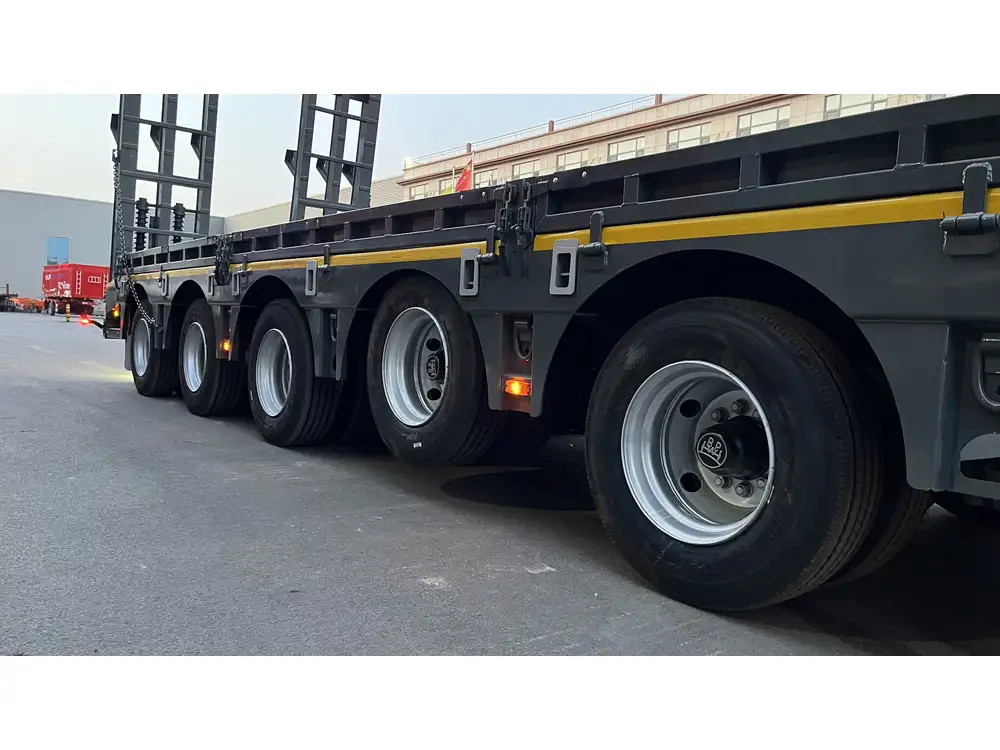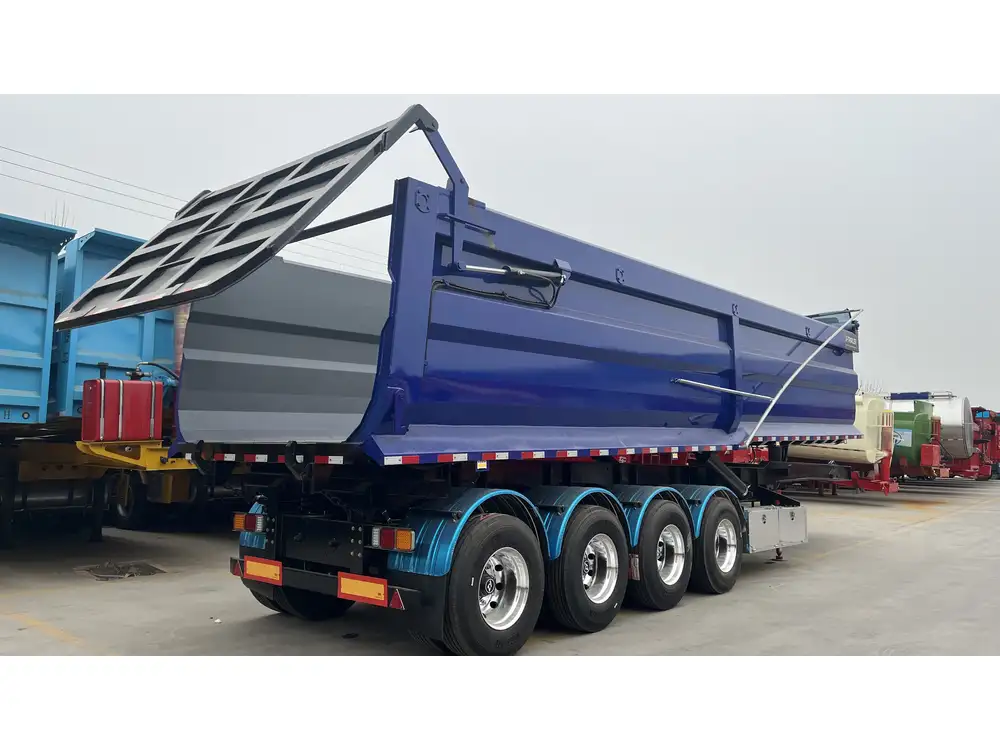Changing a wheel bearing on a semi-trailer is critical to maintaining vehicle safety and efficiency. This detailed guide offers a step-by-step approach, emphasizing best practices and necessary tools, ensuring that you can perform the replacement effectively.
Table of Contents
- Understanding Wheel Bearings
- Tools Required for Changing Wheel Bearings
- Safety Precautions
- Step-by-Step Process to Change Wheel Bearing
- Signs That Indicate a Wheel Bearing Change is Necessary
- Maintenance Tips for Wheel Bearings
- Conclusion: Ensuring Long-Lasting Performance
Understanding Wheel Bearings
Wheel bearings, crucial components in the semi-trailer’s wheel assembly, facilitate smooth rotation and support the trailer’s weight. They are designed to minimize friction and wear during operation; however, they can deteriorate over time due to factors such as load weight, road conditions, and lack of lubrication. Recognizing the function and signals of failing bearings is paramount for any semi-trailer operator.

Tools Required for Changing Wheel Bearings
Before embarking on this task, gather the following tools for an efficient and smooth process:
| Tool | Purpose |
|---|---|
| Socket Wrench Set | For removing nut and bolts |
| Torque Wrench | Ensures the proper tightening of components |
| Flathead Screwdriver | To assist in prying off the dust cap |
| Hammer | For gently tapping components as needed |
| Bearing Puller | To help remove the old bearing |
| Grease Gun | For lubricating the new bearings |
| Jack and Stands | To safely lift the trailer |
| Cleaning Rag | For wiping down surfaces |
| Safety Glasses | To protect your eyes during the process |
Safety Precautions
- Wear Protective Gear: Always wear safety glasses, gloves, and steel-toed boots to protect against injuries.
- Secure the Vehicle: Ensure the semi-trailer is on a flat, stable surface. Use wheel chocks on opposite wheels to prevent movement.
- Use Proper Lifting Equipment: Utilize a hydraulic jack to lift the trailer safely and use jack stands for added security.
Step-by-Step Process to Change Wheel Bearing

Preparation
Ensure you have your tools ready and the trailer is parked securely. Before starting, review the vehicle’s manual for any specific instructions related to your semi-trailer model.
Removing the Wheel
- Loosen Lug Nuts: Using a socket wrench, loosen all the lug nuts on the wheel. Do this while the wheel is still on the ground to prevent it from rotating.
- Lift the Trailer: Position the jack under the designated lifting point and raise the semi-trailer until the wheel is off the ground.
- Secure with Jack Stands: Place jack stands beneath the trailer to ensure stability while you work.
- Remove Lug Nuts: Completely remove the lug nuts and take the wheel off. Store it in a safe place to prevent damage.
Taking off the Brake Assembly
- Detach Brake Lines: Carefully disconnect the brake lines if necessary. Be cautious not to damage them.
- Remove Brake Components: Using appropriate tools, take off the caliper and rotor. Pay attention to the orientation for reassembly.
- Remove the Dust Cover: Gently pry off the dust cover at the center of the hub using a flathead screwdriver.

Accessing the Wheel Hub
- Take out the Retaining Nut: Remove the retaining nut holding the hub in place. Utilize the socket wrench for this task.
- Check Bearing Play: Before removing the hub, check for any excessive play. If present, it’s a sign that the bearing needs replacement.
Removing the Old Wheel Bearing
- Slide Off the Hub: Carefully pull the wheel hub assembly off the spindle.
- Use the Bearing Puller: If the bearing is stuck, employ a bearing puller to extract the old bearing without damaging the spindle.
- Inspect for Damage: Check both the spindle and the hub for any signs of wear or damage. Clean these components with a rag to eliminate dirt and debris.
Installing the New Wheel Bearing
- Prepare the New Bearing: Properly grease the new bearing using a grease gun. Ensure that it’s fully packed for optimal performance.
- Install the New Bearing: Place the new bearing onto the spindle. Ensure it sits correctly and is well-aligned.
- Reattach the Hub: Slide the hub back onto the spindle, ensuring it fits snugly.

Reassembling the Brake Assembly and Wheel
- Reattach the Retaining Nut: Secure the hub with the retaining nut. Use a torque wrench to tighten it according to the vehicle’s specifications.
- Reinstall the Brake Assembly: Attach the brake components in the reverse order of removal. Make sure everything is tightened and secured.
- Put on the Dust Cover: Gently tap the dust cover back into place to ensure protection from dirt.
- Reattach the Wheel: Place the wheel back onto the hub and start threading the lug nuts by hand before tightening them with the wrench.
- Lower the Trailer: Carefully remove the jack stands and lower the trailer back to the ground.
Signs That Indicate a Wheel Bearing Change is Necessary
Recognizing the signs of a failing wheel bearing can save time and costly repairs. Keep an eye out for the following symptoms:
| Sign | Description |
|---|---|
| Unusual Noises | Grinding, humming, or whining noises, especially when turning |
| Vibrations | A noticeable vibration in the steering wheel or vehicle floor |
| Uneven Tire Wear | Tires wearing out unevenly or more quickly than expected |
| Wheel Play | Excessive movement in the wheel when grasped at the top and bottom |
| Warning Lights | Potential warning lights on the vehicle’s dashboard signaling brake issues |
Maintenance Tips for Wheel Bearings
- Regular Inspections: Schedule routine checks to identify any wear early.
- Repack Bearings: For longevity, consider repacking wheel bearings with grease periodically, based on usage.
- Monitor Load Distribution: Ensure that loads are evenly distributed on the trailer to prevent excessive strain on bearings.
- Maintain Proper Tire Pressure: Proper tire maintenance impacts the health of wheel bearings.
- Keep Brake Components in Check: Neglected brakes can lead to overheating and bearing failure.

Conclusion: Ensuring Long-Lasting Performance
Changing the wheel bearing of a semi-trailer is a task that, when done correctly, ensures not only safety but also efficiency and performance longevity. By adhering to the outlined steps, utilizing the proper tools, and following maintenance practices, we can foster an environment where our semi-trailer operates smoothly on the road. Timely interventions will save on larger repairs, keeping your vehicle in prime condition to withstand the rigors of the road. Remember to document any changes and observe any unusual signs over time, ensuring your semi-trailer remains your reliable partner on every journey.



